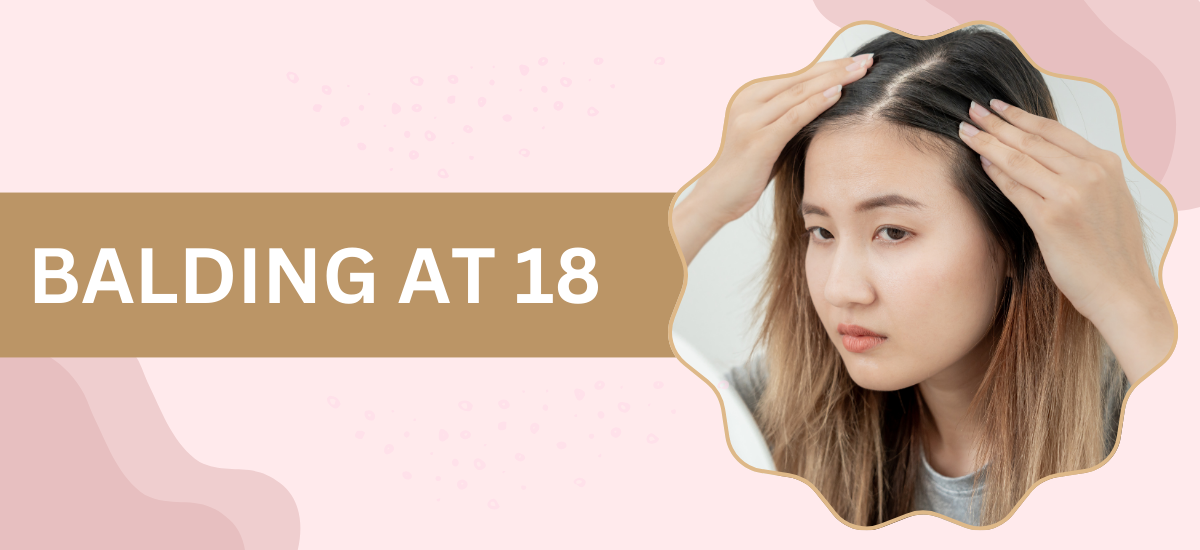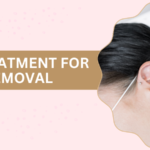
Laser Treatment for Tattoo Removal
July 8, 2024
Reasons for Sudden Hair Loss in Males
August 3, 2024Hair has often been celebrated and philosophized in various cultures as a symbol of beauty and identity. This concept resonates deeply because our hair significantly affects our appearance and confidence. Losing hair can be a distressing experience, especially when it happens at a young age. Balding at 18 can be particularly challenging, impacting self-esteem and social interactions.
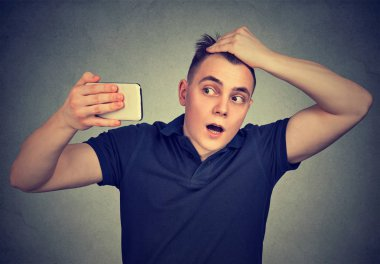
Dr. Anju Methil, founder of The Skin & Shape Clinic and a renowned dermatologist in Andheri, Mumbai, shares her insights on this challenging issue:
“Seeing young people lose their hair is particularly disheartening. The emotional toll can be severe for individual balding at 18 with hair loss as they transition into adulthood. It can undermine their self-esteem, disrupt social interactions, and significantly affect their mental health. Thankfully, modern advancements have led to effective treatments to address and manage this condition.”
Are you struggling with the onset of hair loss at 18? Consult a trusted dermatologist for personalized advice and care.
Seeing hair loss at a young age can be unsettling. But how common is it for someone to start balding at 18? Let’s explore this point!
Is it Normal to Start Balding at 18?
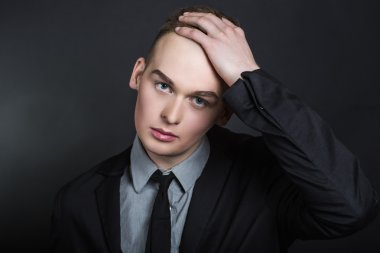
While hair loss is often associated with older adults, young people can also experience early-onset balding. Global research indicates approximately:
- 16% of men between the ages of 18 and 29 exhibit signs of androgenetic alopecia
- 3% of males and 2% of females under the age of 20 report experiencing noticeable hair thinning
Early hair loss can be surprising and emotionally challenging for young adults as they navigate social and personal transformations during these formative years. Recognizing that this issue affects a diverse age group can help normalize the experience and encourage those impacted to seek support and information.
Next, we dive into the key factors contributing to balding at 18.
What Causes Balding at 18 Years of Age?
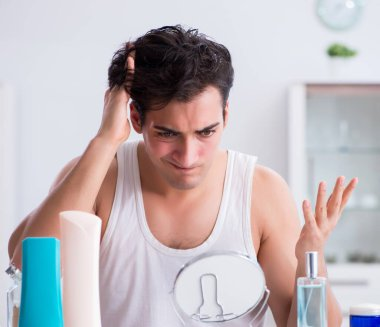
Several factors can lead to hair loss at 18, including:
Genetics: Hereditary hair loss, or androgenetic alopecia, is the most common cause. If close family members experienced early hair loss, there’s a higher likelihood you might, too.
Hormonal Changes: Hormones like dihydrotestosterone (DHT) can shrink hair follicles, leading to hair thinning and loss.
Nutritional Deficiencies: Lack of essential vitamins and minerals, such as iron, vitamin D, and biotin, can weaken hair health.
Stress: High stress levels can trigger conditions like telogen effluvium, where hair prematurely enters the resting phase and falls out.
Medical Conditions: Conditions like thyroid disorders, alopecia areata, and scalp infections can contribute to hair loss.
Poor Hair Care: Tight hairstyles, frequent heat styling, and overuse of strong hair products can harm hair follicles and cause hair loss.
Discovering an effective treatment plan can be a game-changer. Let’s explore the options for managing and reversing hair loss at 18.
What Are the Treatment Options?
Effective treatment options, especially for hair fall at of 18, require a tailored approach depending on the underlying cause and the severity of hair loss.
Topical Medications:
Minoxidil: This over-the-counter topical treatment can be applied to the scalp. It is one of the most accessible and widely used treatments for hair loss, promoting hair growth and preventing further thinning.
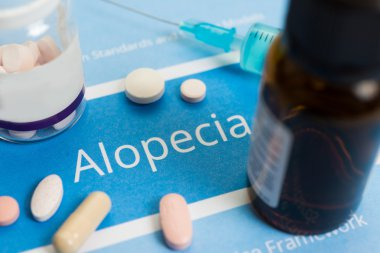
Prescription Medications:
Finasteride: A prescription pill often recommended for male pattern baldness. It blocks the hormone DHT (dihydrotestosterone), a critical factor in hair loss. Finasteride effectively slows hair loss and promotes regrowth but is typically used only in men.
Hair Transplant Surgery:

A hair transplant is a more permanent solution for severe case. It involves extracting hair follicles from one scalp area and relocating them to the balding areas. This procedure can offer dramatic improvements but is invasive and generally recommended for those with stable hair loss.
Low-Level Laser Therapy (LLLT):
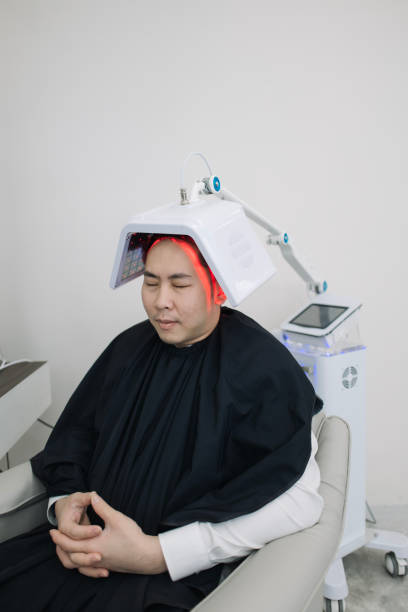
This non-invasive treatment uses therapeutic laser light to stimulate cell growth and improve hair density. The FDA has approved LLLT devices, such as laser combs and helmets, for hair growth treatment.
Platelet-Rich Plasma (PRP) Therapy:
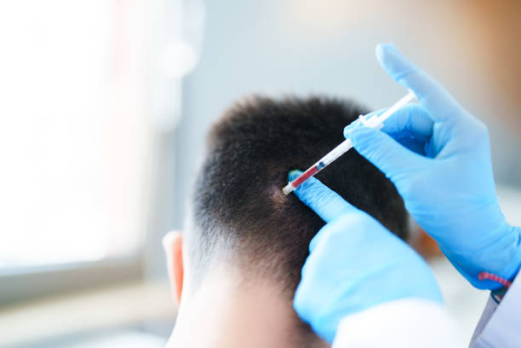
PRP involves drawing a patient’s blood, processing it to enhance the concentration of platelets, and reinjecting it into the scalp. This treatment stimulates natural hair growth by increasing blood supply to the hair follicle.
Mesotherapy:
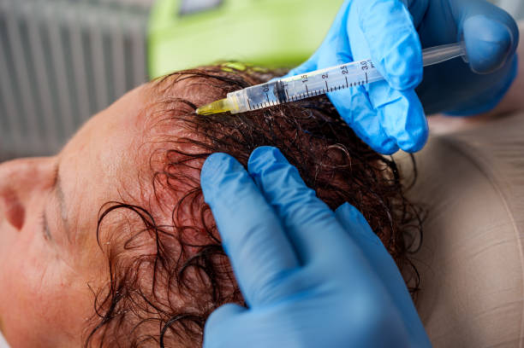
Mesotherapy involves directly microinjecting vitamins, minerals, and growth factors into the scalp. It stimulates the hair follicles by enhancing scalp circulation and increasing nutrient supply.
Lifestyle Modifications:

Addressing nutritional deficiencies with a balanced diet, reducing stress through mindfulness or yoga, and avoiding harsh hair care practices can all contribute to healthier hair and reduce hair loss.
“Each of these treatments has its own set of benefits and limitations”, says Mumbai’s eminent skin and hair specialist, Dr. Anju Methil. “The best approach often involves a combination of therapies tailored to the individual’s specific needs and circumstances.”
Dr. Methils is among the preferred dermatologists for people seeking hair loss treatment in Mumbai.
Are you considering treatment options for hair loss? Discuss your desired outcomes with a qualified hair specialist for effective, tailored solutions.
Prevention is often the best strategy to handle hair loss. Learn proactive steps to safeguard your hair and prevent further loss.
How Can I Prevent Balding at 18?

Preventing hair loss at a young age involves several proactive measures:
Maintain a Healthy Diet: Eat a balanced diet rich in vitamins and minerals essential for hair health, such as iron, zinc, and vitamin D.
Manage Stress: To keep stress levels in check, practice stress-reducing activities like yoga, meditation, or regular exercise.
Avoid Harsh Treatments: Avoid chemical hair treatments, excessive heat styling, and tight hairstyles that can damage hair.
Regular Scalp Care: Keep your scalp clean and healthy to prevent infections and dandruff, which can weaken hair follicles.
Gentle Hair Care: Use mild shampoos and conditioners, and avoid vigorous towel drying or brushing when your hair is wet.
Conclusion
Hair loss can impact individuals at any age, but losing hair at 18 can be particularly challenging. Early hair loss like balding atcan affect self-esteem and social interactions during a crucial developmental stage. Understanding the causes and exploring treatment options can help manage and prevent further hair loss. As Dr. Anju Methil emphasizes, addressing hair loss early with appropriate treatments can make a significant difference.
Are you experiencing early hair loss? Reach out to an experienced dermatologist for expert advice and support.
Still have questions? Let’s clear up some common concerns about hair loss.
FAQ
How much hair loss is normal at 18?
At 18, losing 50 to 100 hairs a day is considered normal due to the natural hair growth cycle. However, significant thinning or noticeable bald patches should be evaluated by a dermatologist.
Can balding at 18 be cured?
While there is no definitive ‘cure’ for balding, especially at a young age, various treatments can effectively manage and slow down hair loss. Consulting a specialist can help determine the most appropriate approach.
Can balding reverse naturally?
Balding typically does not reverse naturally without intervention. However, some individuals may experience partial regrowth or stabilization with proper treatment and lifestyle changes.
If my dad is bald will I be bald?
Genetics play a significant role in hair loss, so if your father is bald, you might be at a higher risk for similar patterns. Nonetheless, other factors such as health, lifestyle, and treatments also influence hair loss.

